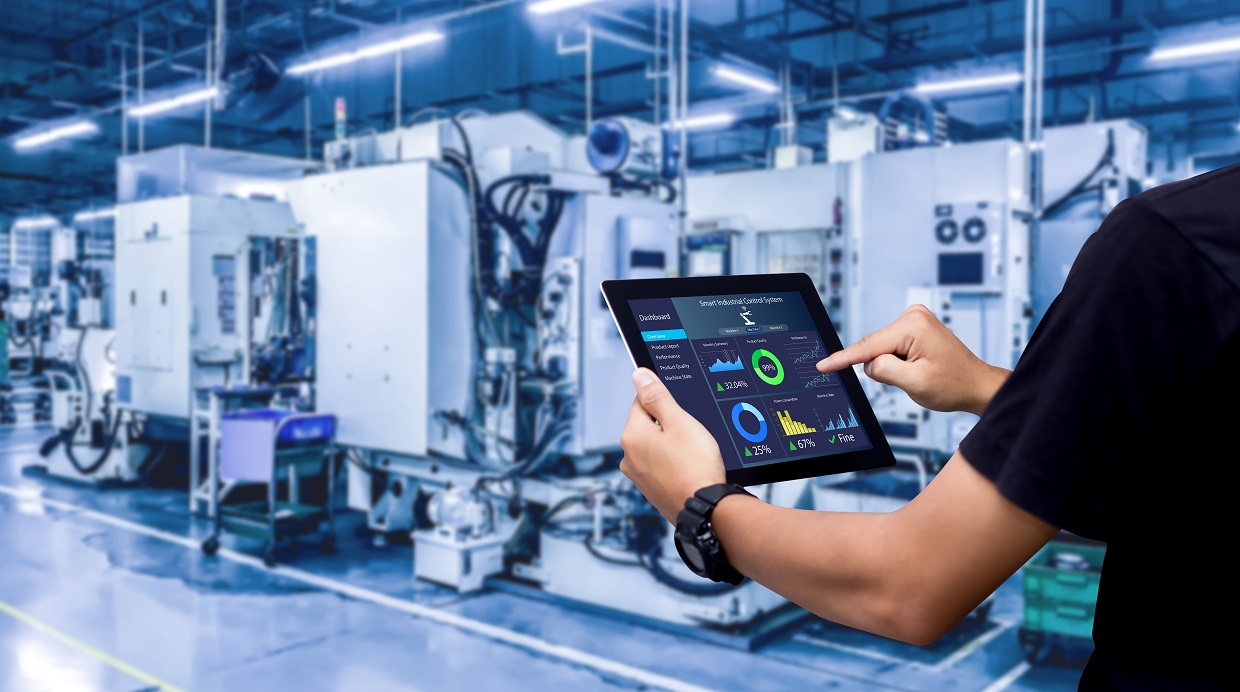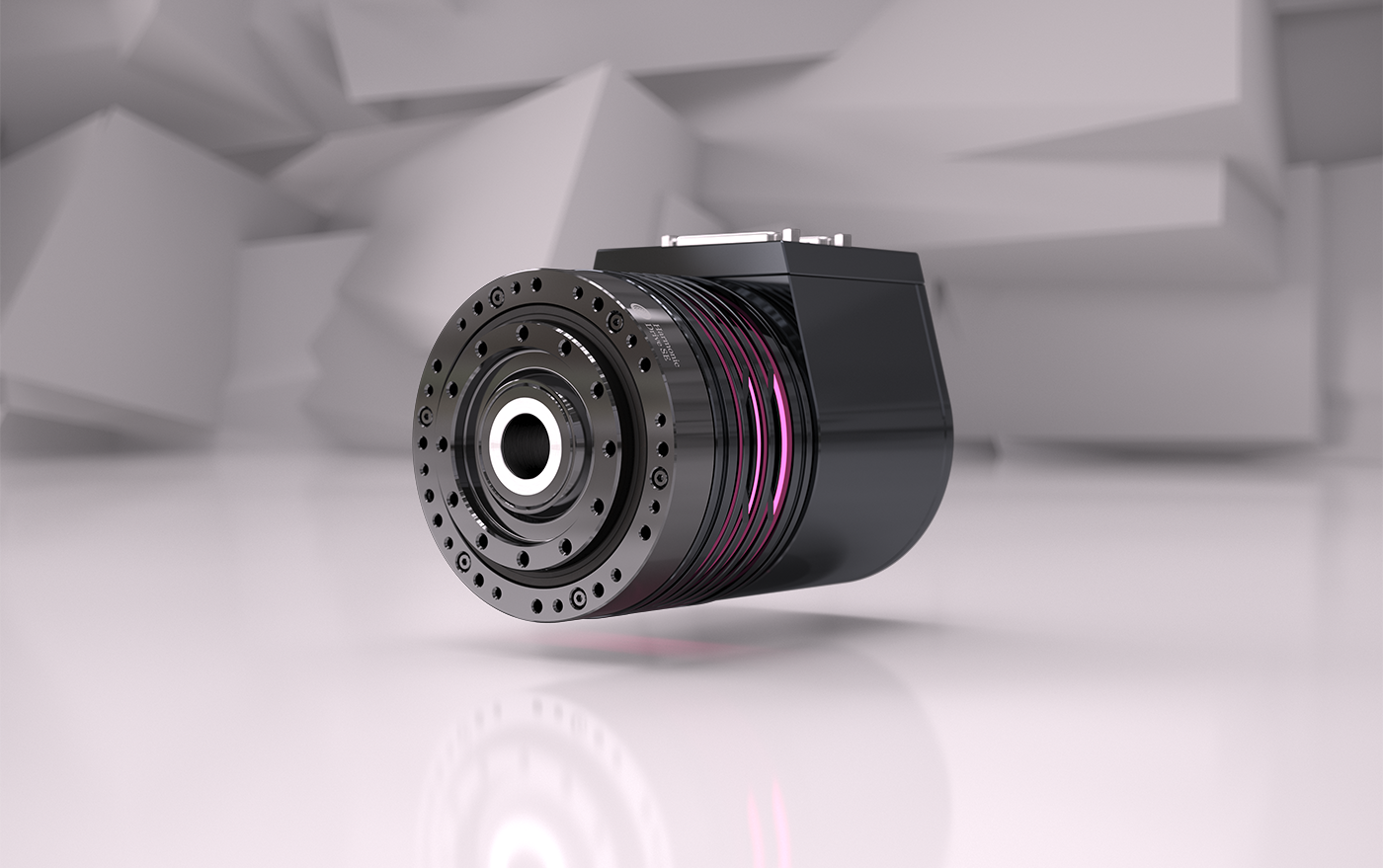Due to rapid technical progress, new professional terms are constantly arising – even in the world of robotics. To familiarize you with the most modern terminology on the subject, we explain 10 terms around robotics here.
The term humanoid robot is used to describe a robot whose design resembles that of a human. Compared to an android, the development here is not aimed at imitating humans. However, the positions of the joints as well as motion sequences are inspired by the human locomotor system. In addition, sensory perceptions such as hearing, seeing and feeling are realized by the humanoids through sensors.
The use of humanoid robots is particularly useful for taking over service tasks in private, non-industrial areas.
Robots designed for direct interaction or collaboration with humans: Cobots – collaborative robots. The aim is for cobots not to replace humans, but rather to work efficiently with them. In this way, the advantages of humans, such as flexibility and creativity, can be combined with the advantages of robots, such as precision and endurance. A major benefit of collaborative robotics is the ease of operation and programming, which is possible even without programming knowledge.
Thanks to their flexibility, cobots can be integrated into numerous processes in the production chain and can take on a wide variety of tasks such as welding, assembly or packaging.
Machine learning comprises a subarea of artificial intelligence that enables IT systems to learn and improve automatically and unprogrammed from experience. Automated knowledge can be generated, algorithms trained, correlations developed and unknown patterns identified. Subsequently, identified patterns and correlations can be applied to a new, unknown data set. Thus, predictions can be made and processes can be optimized.
For the implementation of machine learning, the training of the algorithm by a human is necessary. In so-called model training, training data and sample data are provided from which the algorithm can recognize patterns and correlations and learn from them.
Industry 4.0 would be inconceivable without the smart factory. The smart factory is a self-organizing production environment in which humans play a controlling and monitoring role, but are directly involved in the production process in fewer and fewer places. It is based on intelligent production plants that communicate with each other, evaluate information collected via sensors and coordinate manufacturing processes almost independently.
Technologies such as industrial robots, driverless transport systems, modern warehousing and materials handling technology and drones form the pillars for implementing the factory of the future.
 The Smart Factory is at the center of the so-called Industry 4.0.
The Smart Factory is at the center of the so-called Industry 4.0.
In bin picking, a robot uses a 3D camera to remove specific components from a container of disordered individual parts and feeds them in the correct orientation for further processing. The challenge here is the processing of objects of different shapes that are arranged completely chaotically in boxes.
Smart manufacturing would be inconceivable without automatic object recognition and positioning as a means of increasing efficiency and productivity.
In robotics, Time of Flight refers to the method of mobile robots that enables autonomous movement. Here, 3D cameras measure spatial depths and distances by first illuminating the scene using a light pulse. Then, for each pixel, the camera measures the time of the path taken by the light to reach the object and back again.
Time-of-flight cameras are particularly suitable for applications where a long working distance coupled with high speed and low complexity are required. This camera technology is particularly suitable for volume measurements in logistics, for palletizing and depalletizing tasks, and for autonomously driving vehicles in logistics and production environments.
Plug and Play refers to a technology that allows devices to be connected to a computer and used directly. Manual configuration or installation of a driver is not necessary.
The principle is applied in the new Smart System IHD from Harmonic Drive®. The IHD system comprises a backlash-free gearbox, a sophisticated servo motor, a dual motor feedback system for position measurement and a powerful motion controller in a ready-to-use drive solution. Easy integration into your application is supported not only by the drive's central hollow shaft, which is predestined to carry a wide variety of media, but also by our specially developed, user-friendly software solution for simple commissioning.
Thanks to thermal optimization of its design, the IHD meets all requirements for high-performance applications in the field of stationary and mobile drive technology. The IHD system has an application processor for future smart applications such as condition monitoring and can be used as a separate platform for customer-specific application programming.
With the support of the force-torque sensor, the robot gets its fingertip feeling when gripping components. Image-processing sensors help to register the size and weight of the workpieces. The required pressure force and torque are automatically regulated by the sensor and transmitted as an electrical signal to the robot's controller.
This type of force control enables the approximation of the sensitivity and dexterity of the human hand and the robotized solution of sensitive tasks. Particularly in the context of digitalization and miniaturization, an ever higher degree of sensitivity is required.
 As rigid as a direct drive, as compact as a gearmotor: the IHD Smart System.
As rigid as a direct drive, as compact as a gearmotor: the IHD Smart System.
The effector defines the machining tool at the end of the robot arm, which is guided by the robot to the workpiece. As the end of the kinematic chain, this type of gripper is the part of the robot that performs the target task. End effectors are thus used for the interaction of the robot: for gripping, machining or rotating a workpiece.
Different gripper systems differ in their methodology: mechanical end effectors usually resemble a gripper and grip directly. Vacuum suction cups or suction cups that suck in the workpiece for transport or machining are called pneumatic grippers. Magnetic effectors, on the other hand, pull the workpiece magnetically.
The manipulator executes the movement of the effectors in space. This robot arm consists of several rigid links, which are connected by a certain joint technology. Controlled drives, in turn, change the position of the joints. One end of this link chain is the base, while the other end is free to move and is equipped with a tool or gripper.
With translational and rotational movements, modern industrial robots can reach almost any position, making it much easier to work in difficult-to-reach places.